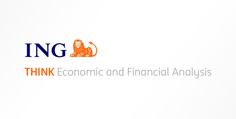It has taken some time, but money markets now price the Fed policy rate at 4% for next spring. A speech by the Fed's Christopher Waller on Friday re-iterated that a 4% Fed funds rate would be seen later this year even as inflation slowed. A high bar for the Fed to pivot and Europe continuing to struggle with the energy crisis should keep the dollar bid on dips
US Dollar: Expect consolidation ahead of tomorrow's August CPI print
The dollar is consolidating after entering another mini-corrective period late last week. Driving Friday's dollar sell-off was probably a combination of views that major trading partners (the eurozone and Japan) were entering a new phase in supporting their currencies - be it more aggressive rate hikes (eurozone) or FX intervention (Japan). The dollar correction has been worth just over 1% and again we would not put ourselves in the 'peak dollar' camp.
For one thing, Fed hiking expectations are still looking for the right level. On Friday, the US money market strip priced the Fed funds rate at 4% for the first time in this cycle. On Friday the Fed's Christopher Waller gave a speech highlighting that 4% would be the right Fed level for the turn of the year - and this assumed that inflation would be slowing. He recalled the Fed's quarterly economic projections which assumed that core PCE would have fallen to 4.3% year-on-year by the end of the year. Core PCE currently stands at 4.6% YoY having peaked at 5.3%. The point here is that Waller felt that 4% would be appropriate if inflation slowed to 4.3% - if not the Fed funds rate should be taken into even more restrictive territory.
On that subject, the US data highlight of the week is tomorrow's release of August CPI. While lower gasoline prices should bring headline CPI lower, core inflation should still be rising. And with the Fed expected to hike another 75bp next week and introduce new quarterly projections, we doubt much momentum will build behind a dollar correction.
108.50 may well be enough of a correction for DXY and we would be favouring a move back above 110 next week.
Euro: And 2% seems to be the target for the ECB
Following Thursday's hawkish European Central Bank (ECB) meeting, Friday saw an array of off and on-the-record comments from the ECB. Most seem to point to the need for the ECB policy rate (still seen as the deposit rate) to be taken to the 2.00% area - that is 125bp higher than its new target. Money markets price the deposit rate at 1.75% for year-end and perhaps closer to 2.50% next spring - suggesting the 2% pricing could move forward to year-end should expectations solidify that the ECB hikes 75bp at its October 27 meeting.
The hawkish ECB has seen EUR/USD push up to the 1.0100 area. 1.0150 looks like the top of a bearish channel that has contained the EUR/USD decline since February. That will be the trigger point for a further short squeeze in EUR/USD - though we think it may well hold. Beyond the ECB there is much focus on what European politicians can do to address the energy crisis. EU energy ministers were split on some issues on Friday given national interests. EU Commission President Ursula von der Leyen will, on Wednesday, deliver what has been agreed upon so far - though we suspect it will not be enough to allay fears of a European recession this winter.
Expect EUR/USD to consolidate into tomorrow's US CPI, with again 1.0150 proving the key intra-day resistance level.
Pound Sterling: July GDP slightly softer than expected
July UK GDP has come in slightly softer than expected at 0.2% month-on-month. However, the adjustment for the June bank holiday makes the figures a little difficult to read and we think the Bank of England (BoE) will take more notice of tomorrow's August jobs data for insight into how tight the UK labour market really is. All in, we expect the BoE to hike 50bp again when it decides policy rates on September 22.
We are not particularly bearish on the dollar - thus we doubt GBP/USD makes it as far as the 1.1730/50 resistance area. EUR/GBP can consolidate in a 0.8650-08720 range after recent gains.
Disclaimer: This publication has been prepared by ING solely for information purposes irrespective of a particular user's means, financial situation or investment objectives. The information does not constitute investment recommendation, and nor is it investment, legal or tax advice or an offer or solicitation to purchase or sell any financial instrument. Read more
